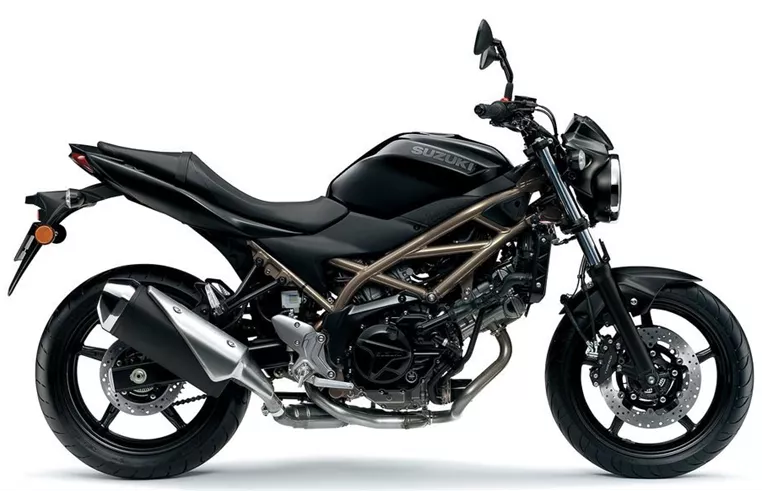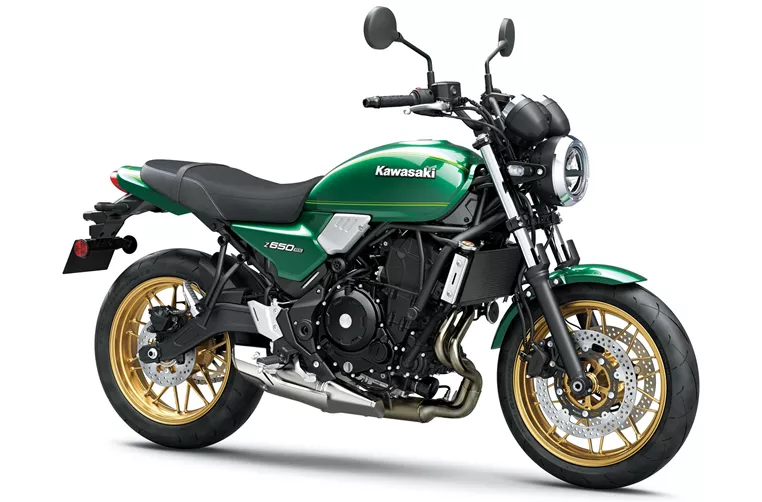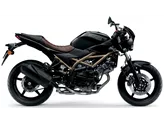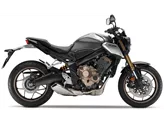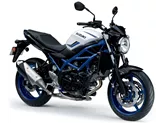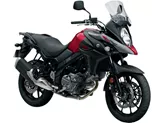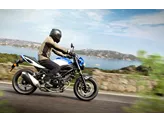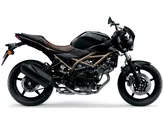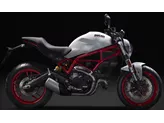Suzuki SV 650 2021 vs. Kawasaki Z650 RS 2022
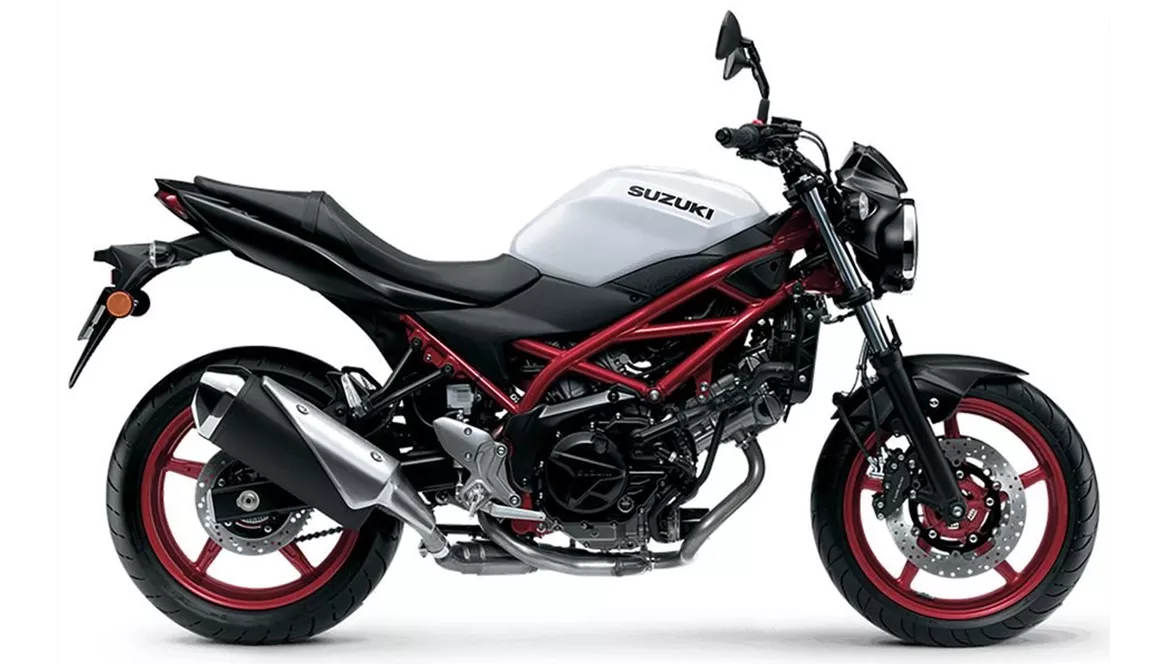
Suzuki SV 650 2021
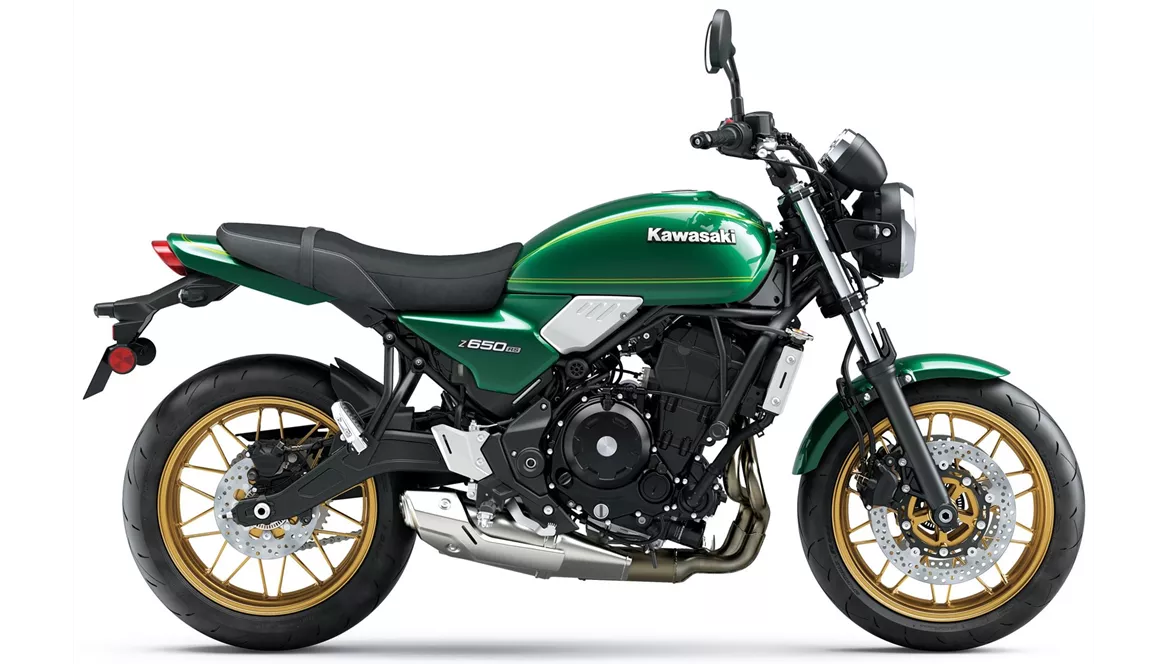
Kawasaki Z650 RS 2022
Vue d’ensemble - Suzuki SV 650 2021 vs Kawasaki Z650 RS 2022
The Suzuki SV 650 2021 and the Kawasaki Z650 RS 2022 are both naked bikes that offer a thrilling riding experience. Let's compare these two models in terms of their technical specifications and strengths.
In terms of the engine and drive train, the Suzuki SV 650 2021 is equipped with a V2 engine that delivers 73 HP of power and 64 Nm of torque. On the other hand, the Kawasaki Z650 RS 2022 features an in-line engine that produces 68.2 HP of power and 65.7 Nm of torque. Both bikes have a fuel injection system, liquid cooling, and a displacement of around 650cc.
When it comes to suspension, both bikes have a telescopic fork at the front and a swing arm with a monoshock at the rear. The suspension on both models can be adjusted for preload.
In terms of the chassis, both bikes have a steel frame with a tubular design, providing stability and durability.
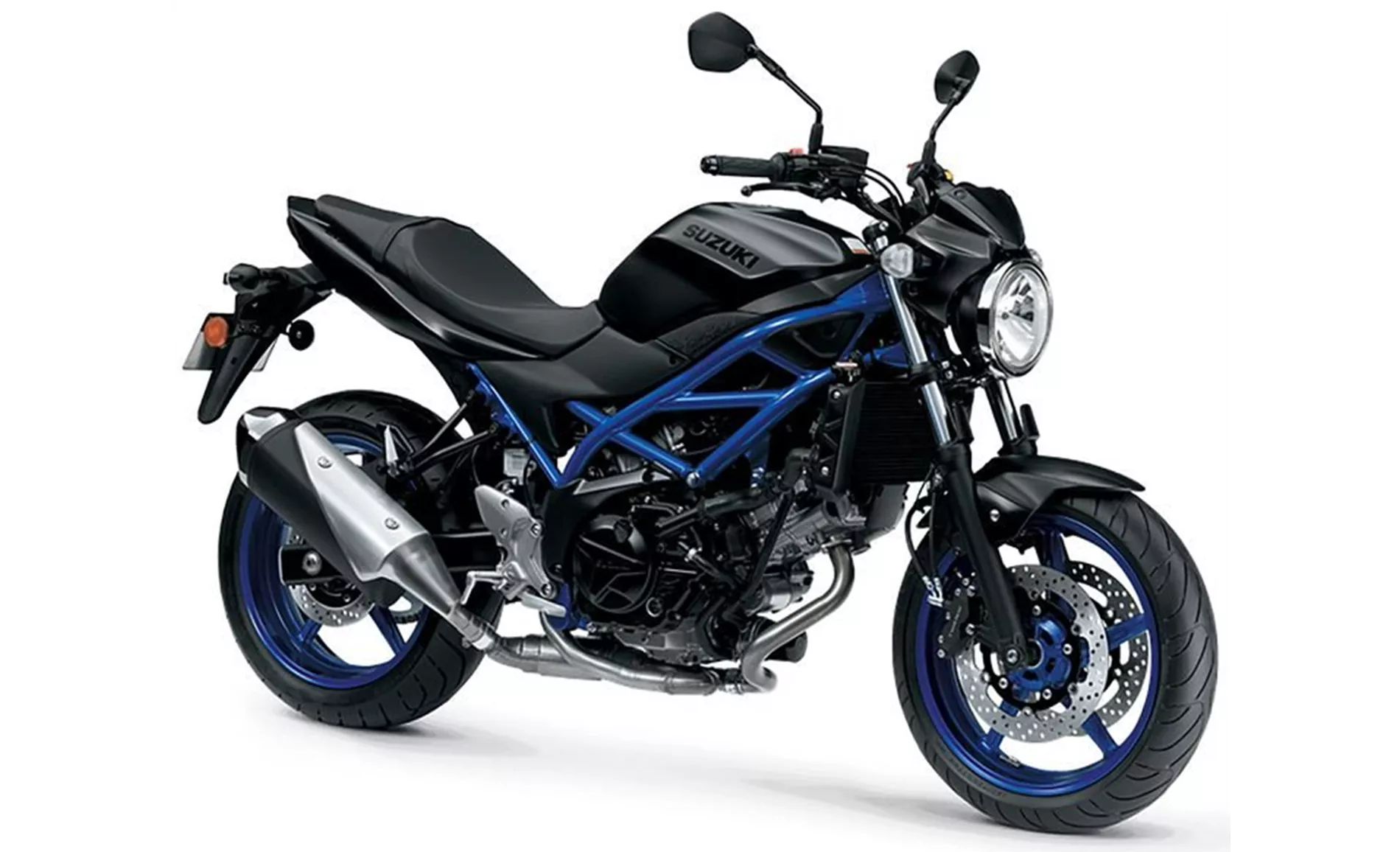
Suzuki SV 650 2021
For braking, both bikes are equipped with double disc brakes at the front. However, the Suzuki SV 650 2021 has four-piston calipers and a diameter of 290 mm, while the Kawasaki Z650 RS 2022 has double-piston calipers and a slightly larger diameter of 300 mm.
Both bikes come with advanced rider assistance systems, including ABS, which enhances safety during braking.
In terms of dimensions and weights, the Suzuki SV 650 2021 has a front tire width of 120 mm, a rear tire width of 160 mm, and a wheelbase of 1445 mm. The seat height is 785 mm, and the kerb weight with ABS is 200 kg. The fuel tank capacity is 14.5 liters.
On the other hand, the Kawasaki Z650 RS 2022 has similar tire dimensions, with a front tire width of 120 mm and a rear tire width of 160 mm. However, it has a slightly shorter wheelbase of 1410 mm and a higher seat height of 820 mm. The kerb weight with ABS is 187.1 kg, and the fuel tank capacity is 15 liters.
Now let's discuss the strengths of each bike. The Suzuki SV 650 2021 is praised for its confident V2 powerplant that offers a characterful riding experience. It also has a stable chassis, comfortable seating position, and easy handling. Additionally, its timeless look appeals to riders who appreciate classic styling.

Kawasaki Z650 RS 2022
On the other hand, the Kawasaki Z650 RS 2022 stands out with its perfectly realized retro design. It features analogue displays, which add to its classic appeal. The lively engine, accessible handling, and powerful brakes contribute to an exciting riding experience. The bike also offers comfortable ergonomics and adjustable levers for a personalized fit. Its retro design makes it a real eye-catcher on the road.
However, both bikes have their weaknesses. The Suzuki SV 650 2021 requires manual force for braking, as it lacks any electronic brake assist systems. Additionally, apart from ABS, it does not have any other electronics on board. The instruments on the bike are moderately readable, which may be a drawback for some riders.
On the other hand, the Kawasaki Z650 RS 2022 has a slightly softer sound, which may not be as appealing to riders who prefer a more aggressive exhaust note.
In conclusion, both the Suzuki SV 650 2021 and the Kawasaki Z650 RS 2022 offer exciting riding experiences with their powerful engines, advanced rider assistance systems, and comfortable ergonomics. The choice between these two models ultimately comes down to personal preference, whether it be the Suzuki's V2 powerplant and timeless look or the Kawasaki's perfectly realized retro design and adjustable levers.
Caractéristiques techniques Suzuki SV 650 2021 par rapport à Kawasaki Z650 RS 2022
Avantages et inconvénients en comparaison
Avantages et inconvénients en comparaison
Suzuki SV 650 2021
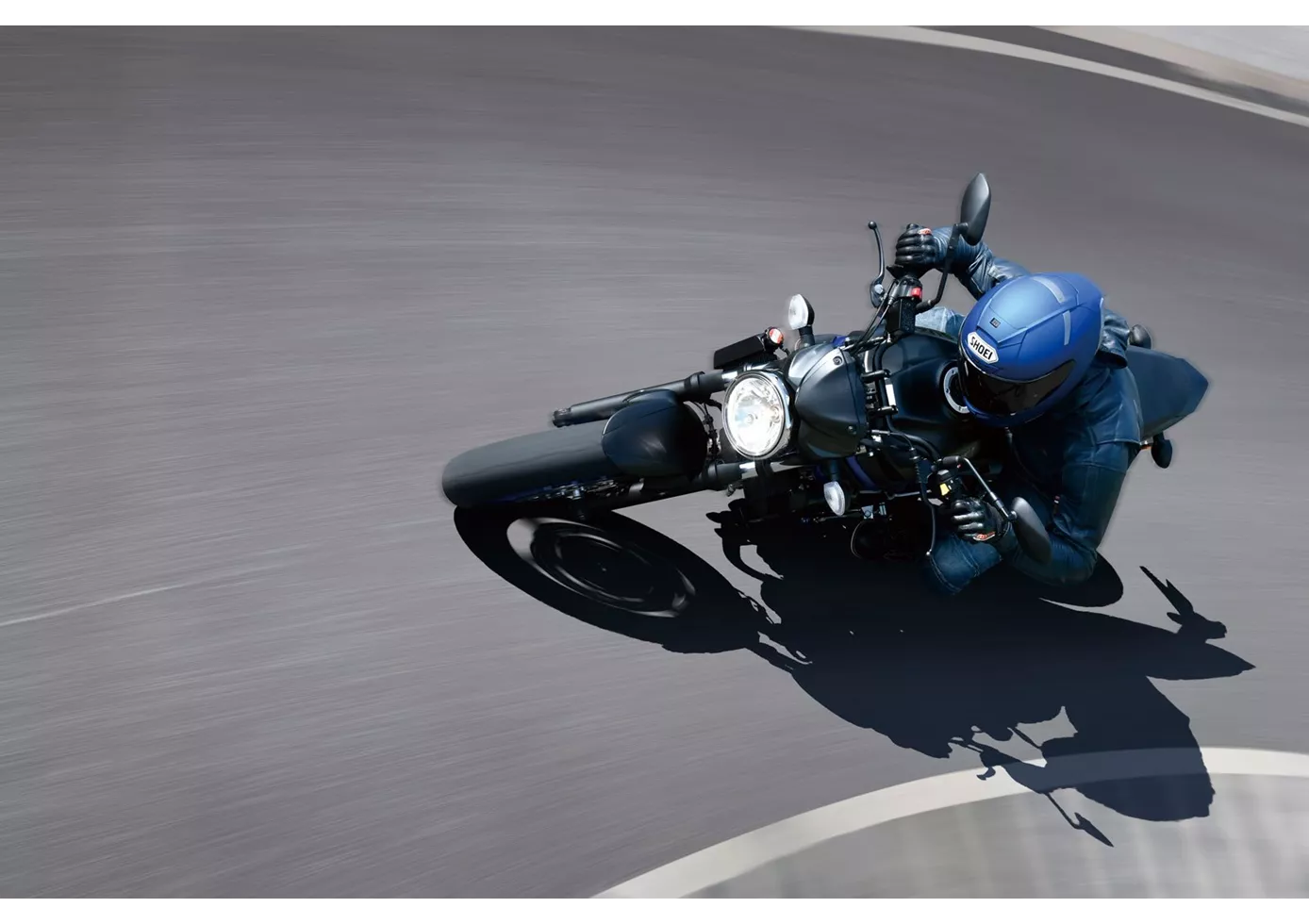
La Suzuki SV 650 n'a pas beaucoup évolué depuis cinq ans par rapport à son prédécesseur. Le moteur a été mis à jour selon la norme Euro5 et se présente désormais de manière encore plus adulte, ce qui lui permet de s'intégrer parfaitement au reste du package. La SV 650 ne veut effrayer personne, surtout pas les débutants. Le châssis donne une impression de solidité et de sérénité, le frein demande une bonne force manuelle pour éviter un surfreinage inattendu. L'optique est d'une part intemporelle, mais d'autre part vraiment un peu dépassée sur certains composants. En revanche, le prix est correct, comme d'habitude chez Suzuki.
Kawasaki Z650 RS 2022
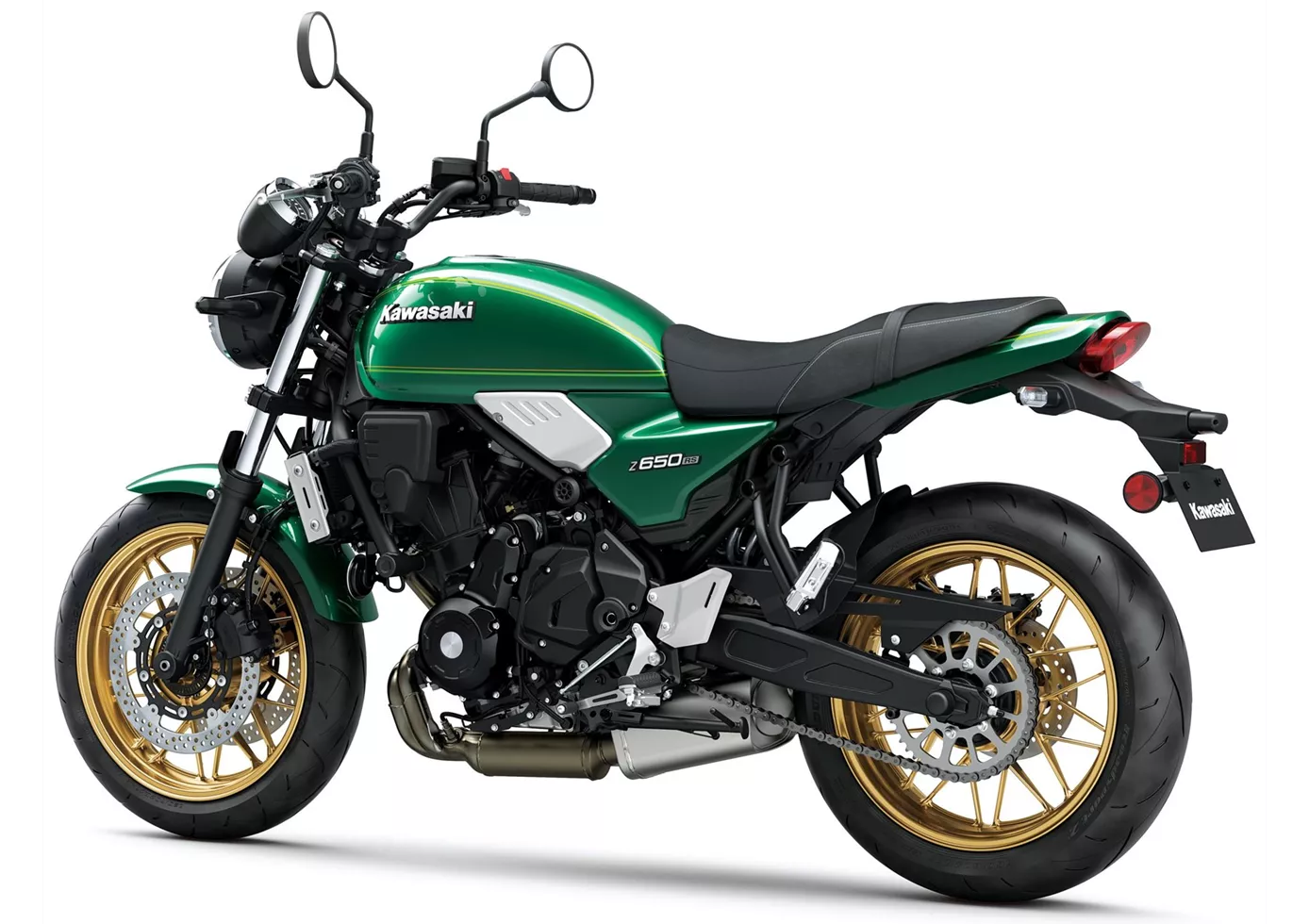
Avec la RS, Kawasaki prouve qu'elle maîtrise l'art des motos rétro. On oublie tout de suite que sous la jolie robe se cache la Z650 normale, car grâce aux bons détails, le design rétro s'est imposé de manière convaincante. En selle, on se réjouit de l'accessibilité que l'on connaît de sa sœur technique. Une moto rétro qui fera le bonheur des débutants comme des motards expérimentés !
Comparaison des prix Prix moyen du marché Suzuki SV 650 vs Kawasaki Z650 RS
There are a few key differences between a Suzuki SV 650 2021 and a Kawasaki Z650 RS 2022. In terms of price, the actual average price of a Kawasaki Z650 RS 2022 is about 38% higher. A Suzuki SV 650 2021 experiences a loss of 130 USD in one year of ownership. This is offset by a loss of 300 USD for a Kawasaki Z650 RS 2022. Compared to Kawasaki Z650 RS 2022 there are less Suzuki SV 650 2021 bikes available on the 1000PS.de Marketplace, specifically 13 compared to 34. It takes less time to sell a Suzuki SV 650 with 111 days compared to 146 days for a Kawasaki Z650 RS. Since model year 2005 1000PS.de editors have written 25 reviews for the Suzuki SV 650 and 12 reviews for the Kawasaki Z650 RS since model year 2022. The first review for the Suzuki SV 650 was published on 9/26/2008 and now has more than 14,200 views. This compares to more than 39,300 views for the first review on Kawasaki Z650 RS published on 9/27/2021.
